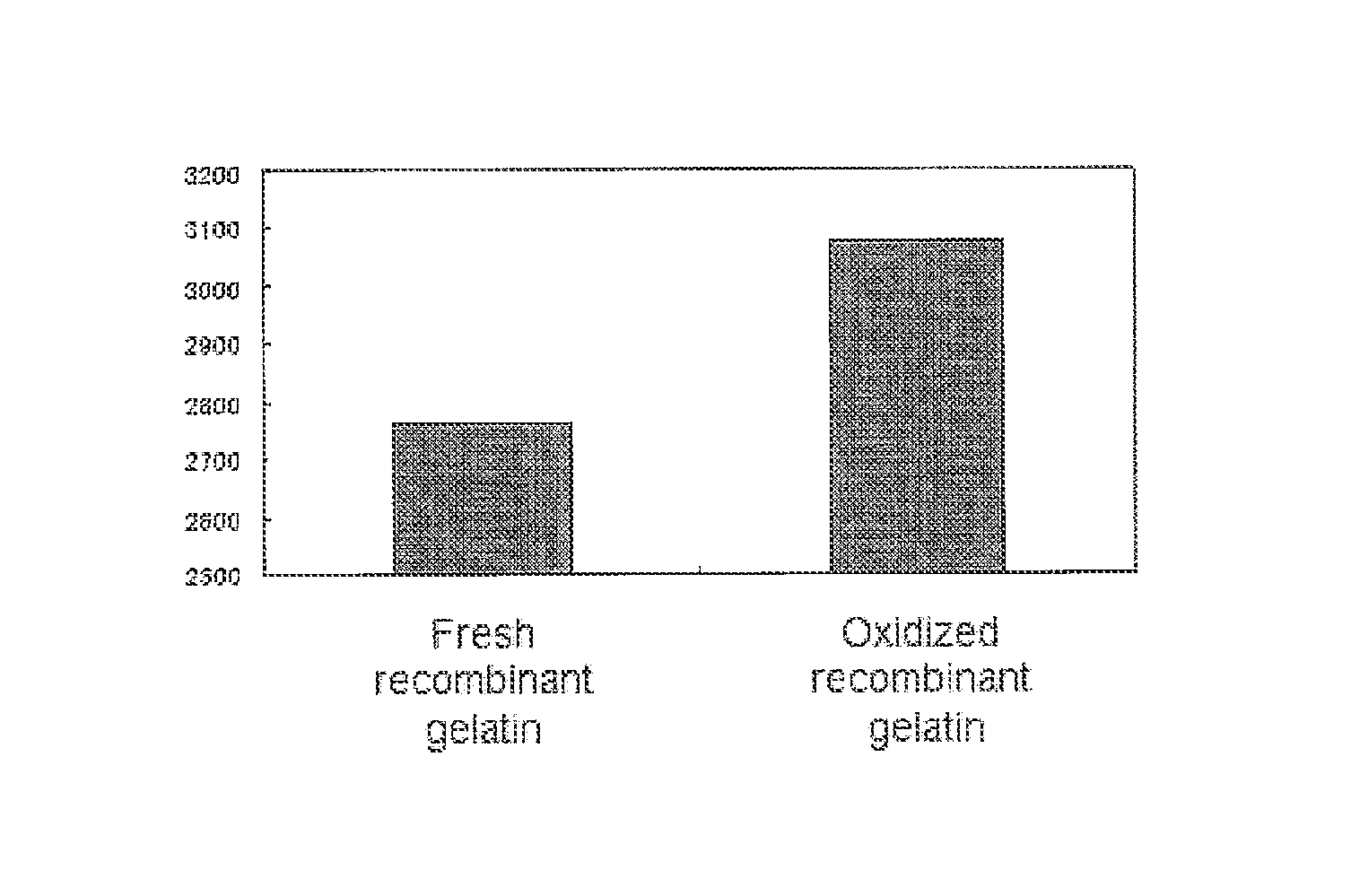Cell-adhesive protein
a cell-adhesive protein and protein technology, applied in the field of cell-adhesive proteins, can solve the problems of no revolutionary reports, no cell-adhesive properties of the above-mentioned peptides or proteins, and the survival rate of transplanted cells engrafted into tissues is extremely low, so as to improve the cell adhesion rate, high cellular adhesion, and stable supply
- Summary
- Abstract
- Description
- Claims
- Application Information
AI Technical Summary
Benefits of technology
Problems solved by technology
Method used
Image
Examples
example 1
Recombinant Gelatin
[0073]As a recombinant gelatin, the following CBE3 (described in WO2008-103041) was prepared.[0074]CBE3[0075]Molecular weight: 51.6 kD[0076]Structure: Gly-Ala-Pro[(Gly-X-Y)63]3Gly[0077]Number of amino acids: 571[0078]Number of RGD sequences: 12[0079]Imino acid content: 33%[0080]Substantially 100% of amino acids form the Gly-X-Y repeat structure.[0081]The amino acid sequence of CBE3 does not contain any of serine, threonine, asparagine, tyrosine, and cysteine.[0082]CBE3 has an ERGD sequence.[0083]Isoelectric point: 9.34[0084]Amino acid sequence (SEQ ID NO: 1 in the Sequence Listing) (This amino acid sequence corresponds to the amino acid sequence shown in SEQ ID NO: 3 in WO2008 / 103041. Note that “X” at the end was modified to “P.”)
[0085]
GAP(GAPGLQGAPGLQGMPGERGAAGLPGPKGERGDAGPKGADGAPGAPGLQGMPGERGAAGLPGPKGERGDAGPKGADGAPGKDGVRGLAGPIGPPGERGAAGLPGPKGERGDAGPKGADGAPGKDGVRGLAGPIGPPGPAGAPGAPGLQGMPGERGAAGLPGPKGERGDAGPKGADGAPGKDGVRGLAGPP)3G
[0086]In the Examples described belo...
PUM
| Property | Measurement | Unit |
|---|---|---|
| temperature | aaaaa | aaaaa |
| temperature | aaaaa | aaaaa |
| temperature | aaaaa | aaaaa |
Abstract
Description
Claims
Application Information
 Login to View More
Login to View More - R&D
- Intellectual Property
- Life Sciences
- Materials
- Tech Scout
- Unparalleled Data Quality
- Higher Quality Content
- 60% Fewer Hallucinations
Browse by: Latest US Patents, China's latest patents, Technical Efficacy Thesaurus, Application Domain, Technology Topic, Popular Technical Reports.
© 2025 PatSnap. All rights reserved.Legal|Privacy policy|Modern Slavery Act Transparency Statement|Sitemap|About US| Contact US: help@patsnap.com

